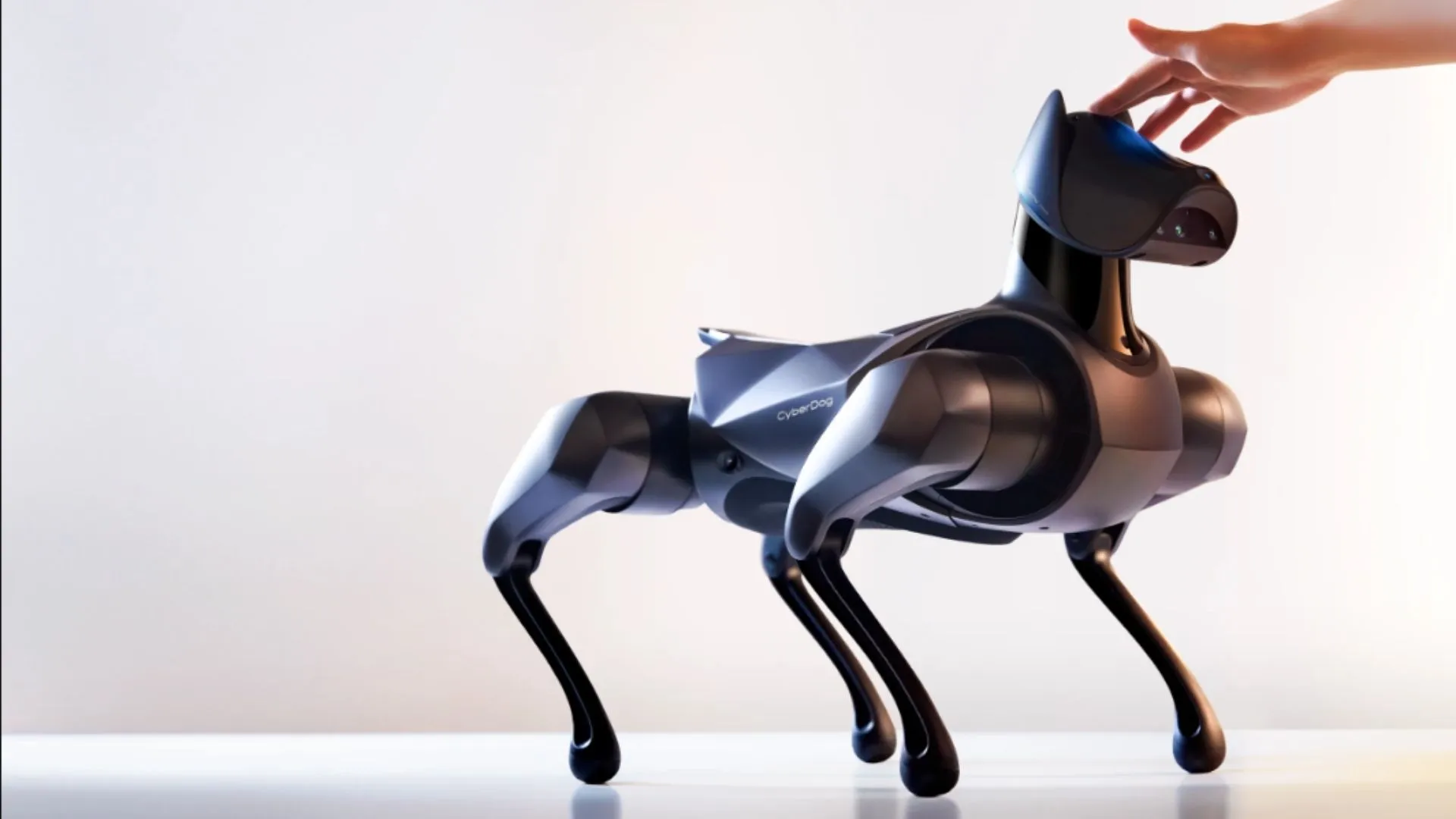Xiaomi unveiled the CyberDog 2 at the Mobile World Congress 2024, showcasing their advancements in bio-inspired robotics. Here’s what we know about this fascinating quadruped robot.
Important components
Xiaomi’s CyberDog 2, unveiled at the Mobile World Congress 2024, showcases significant advancements in bio-inspired robotics. The robot adopts a quadruped design, mimicking the movements of a dog for agile and dynamic movement. This design choice, coupled with AI-powered learning capabilities thanks to the NVIDIA Jetson Xavier NX AI supercomputer, allows the CyberDog 2 to learn new skills and potentially adapt to its surroundings.
Compared to its predecessor, the CyberDog 2 boasts several improvements. It can now carry an increased payload of 1 kg (2.2 lbs), making it more versatile for various applications. It also achieves faster movement with speeds of up to 1.6 m/s (3.5 mph) and boasts more substantial torque with a maximum of 37.85 Nm/kg, translating to enhanced power and performance.
Read also: Xiaomi unveils new smartphone, Xiaomi 13T in Nigeria
The CyberDog 2 is equipped with a comprehensive suite of 19 high-precision sensors, which includes an RGB camera, an interactive AI camera, LiDAR, depth, and ultrasonic sensors. This advanced sensory system enables the robot to effectively perceive its surroundings, navigate obstacles, and interact with its environment seamlessly.
Xiaomi fosters collaboration and development by offering an open-source platform for CyberDog 2. This feature allows developers to create software and applications, potentially expanding the robot’s capabilities and functionalities for various unforeseen uses. With its advanced features, learning capabilities, and open-source platform, the CyberDog 2 presents an exciting glimpse into the future of bio-inspired robotics.
Potential applications
Beyond its captivating form and features, the CyberDog 2 holds the potential for various practical applications. Its agility and advanced sensor suite make it a valuable tool in challenging situations. The robot’s ability to navigate rough terrain and perception capabilities could be crucial in search and rescue operations. Its sensors could help locate survivors in debris or difficult-to-reach areas, while its agile movements allow it to manoeuvre through confined spaces.
Furthermore, the CyberDog 2’s strengths can be harnessed for inspection and monitoring tasks. Its agility and manoeuvrability make it suitable for navigating hazardous environments that might be dangerous for humans. The diverse sensors, including LiDAR and depth sensors, allow for detailed mapping and data collection in these environments, facilitating remote monitoring and analysis.
While companionship might not be its primary purpose, the CyberDog 2’s learning and interactive capabilities could foster a playful and engaging relationship with its users. Its ability to adapt and learn new skills could pave the way for personalised interactions and provide companionship, especially when human interaction is limited.
The current stage of development
The CyberDog 2 remains a concept at this stage. While showcasing significant advancements, it still needs to be commercially available. Xiaomi aims to integrate these technologies into real robots within five years, suggesting their commitment to further development in this field.
Despite its potential, the CyberDog 2 faces challenges
While the CyberDog 2 presents an exciting leap forward in bio-inspired robotics, it’s essential to acknowledge the challenges before widespread adoption becomes a reality.
One of the main hurdles is cost. Advanced robotics technology remains expensive, potentially limiting CyberDog 2’s accessibility for individual consumers and even smaller organisations, which could hinder its potential impact and widespread application.
Moreover, safety concerns need to be addressed. As with any autonomous technology, ensuring the robot’s and its surroundings’ safety is paramount, mainly when operating in dynamic public spaces. Robust safety measures and protocols must be established to mitigate potential risks and build public trust in this technology.
Finally, clear regulations and guidelines are necessary for the responsible development and operation of robots like the CyberDog 2. Establishing a robust regulatory framework will be crucial for addressing safety concerns, ethical considerations, and potential legal issues surrounding data privacy and liability, paving the way for the responsible integration of such advanced robots into society.
The CyberDog 2 offers a fascinating look into the direction that bio-inspired robotics is taking. Xiaomi’s dedication to innovation in this space is evident in its cutting-edge features, open-source platform, and possible applications. But before mass use becomes a reality, several substantial regulatory, financial, and safety obstacles must be addressed.
